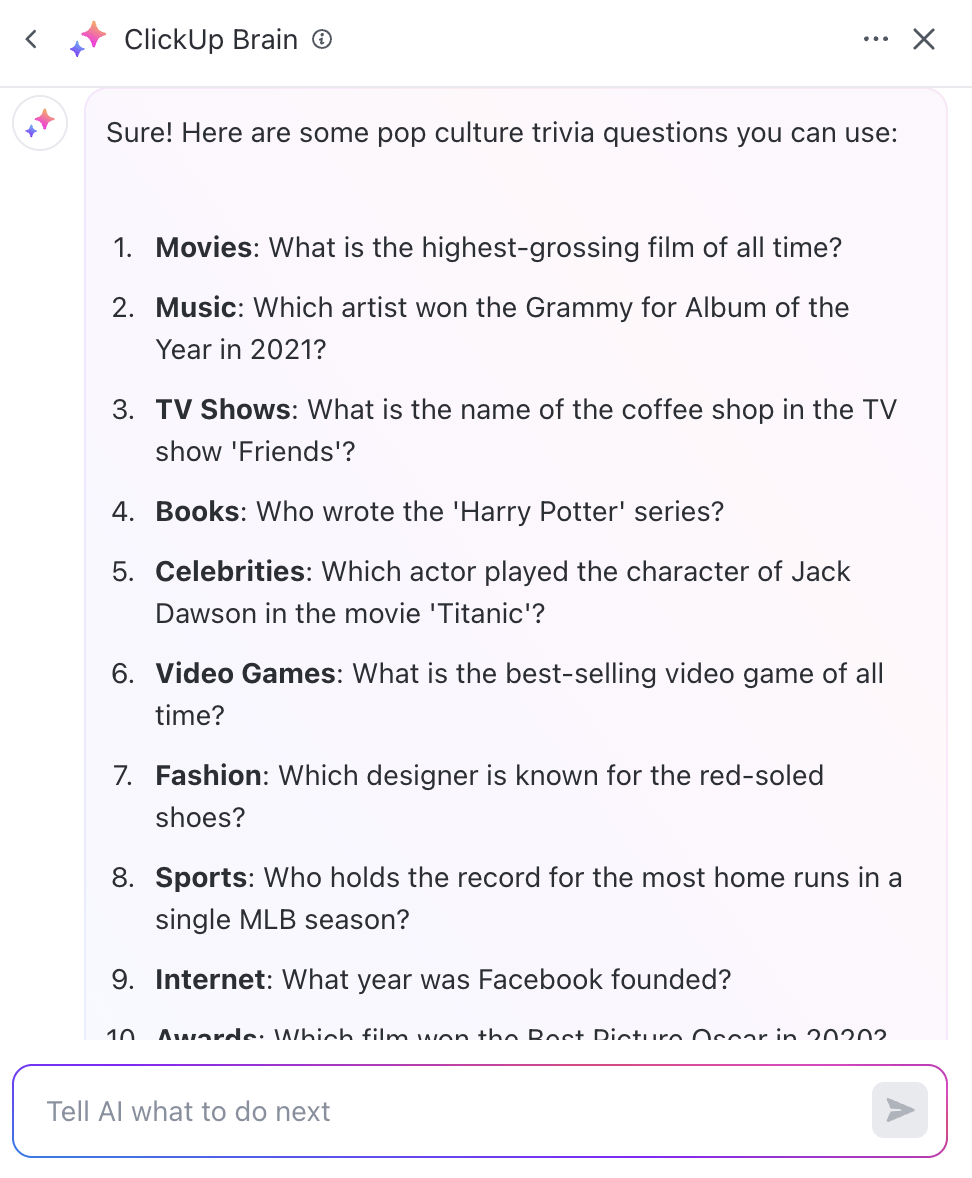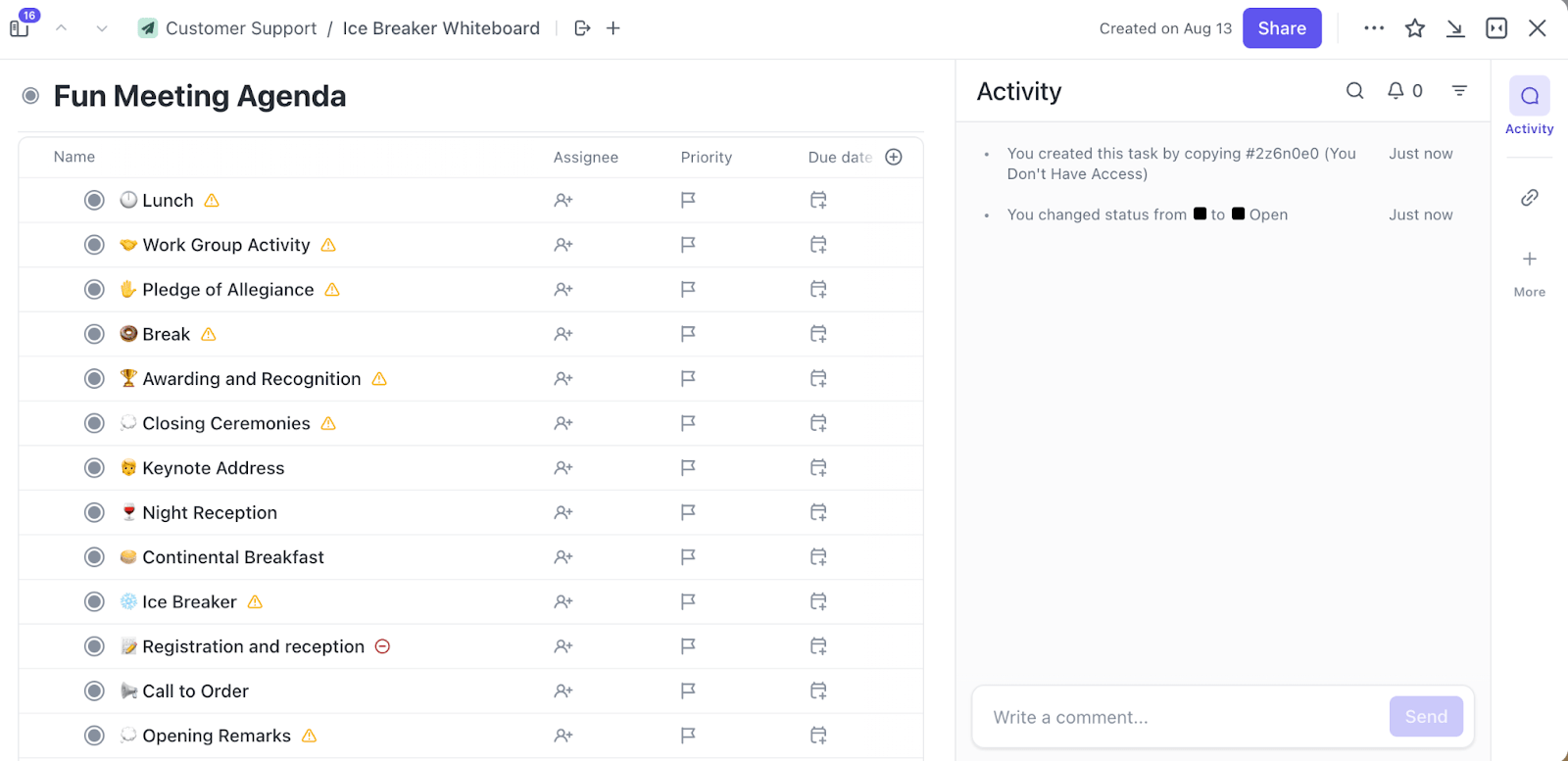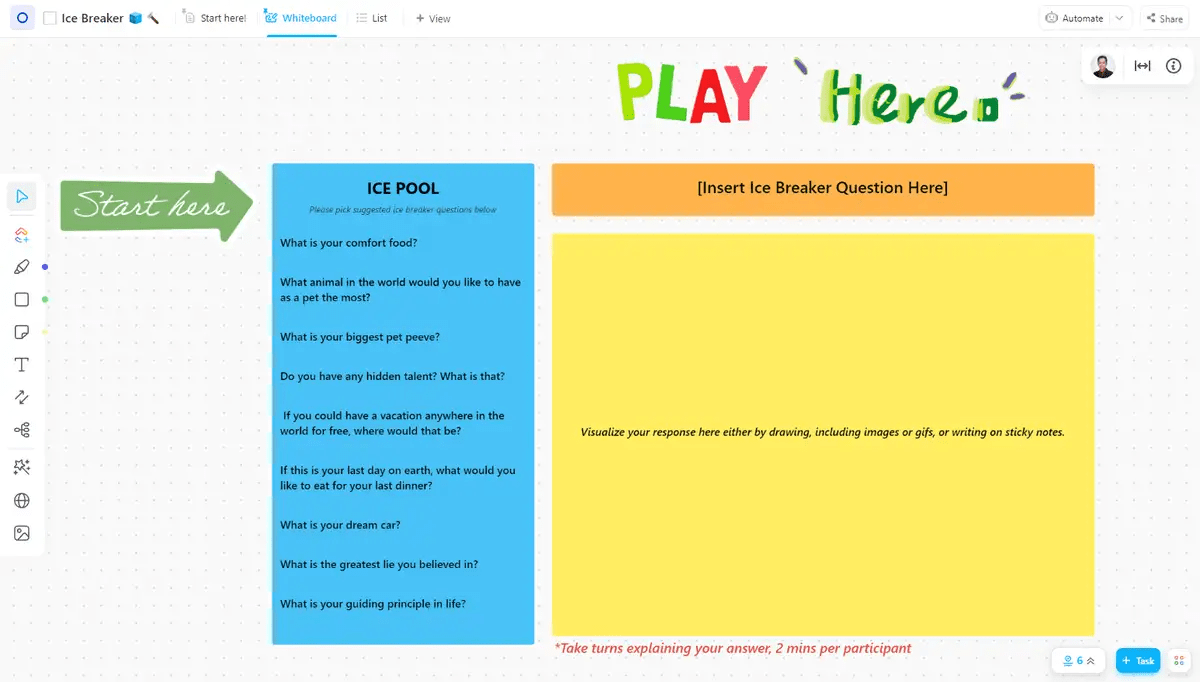Small talk often serves as the foundation for deeper connections. Have you ever started a conversation about the weather at work and unexpectedly found yourself exploring life’s big questions around purpose?
However, small talk doesn’t always happen organically at work—especially for introverts or remote workers. To bridge this gap, team-building experts often recommend structured activities that encourage casual conversations and help colleagues connect personally.
One way to do this is to use an ice breaker, a structured interaction that transforms superficial small talk into genuine conversations that encourage deeper bonds and build high-performing teams.
In this blog post, we will discuss 15 fun ice breaker games and activities to bring your team together without the awkwardness typically associated with them.
⏰ 60 Second Summary
Break the ice, boost engagement, and create stronger team connections with these fun activities:
- Icebreaker Questions – Simple, thought-provoking prompts to start conversations.
- Icebreaker Activities – Hands-on exercises that encourage collaboration and creativity.
- Icebreaker Games – Fun, lighthearted challenges that promote teamwork and friendly competition.
- Icebreaker Quizzes – Trivia-based games to spark engagement and test knowledge.
- Energizing Icebreakers – Quick, high-energy activities to re-engage a group and keep the momentum going.
- Icebreakers for Remote Teams – Virtual-friendly games and activities designed for online meetings.
ClickUp makes it easy to plan and run icebreaker sessions, helping you organize ideas, track participation, and keep meetings engaging with interactive tools.
What Is an Icebreaker?
An icebreaker is a short, interactive activity designed to help a group of people get acquainted and comfortable with each other. It’s often used at the start of meetings, workshops, and social events and is a great way to create a relaxed atmosphere.
Here’s some trivia (you can even share it at your next icebreaker): the phrase ‘break the ice’ originates from the Latin expression scindere glaciem, which means ‘to open the way and be the first to carry out a task.’
Ice breaker activities do just that—they create a welcoming space for open and natural conversation.
How small teams benefit from icebreakers
Ice breakers are particularly impactful for smaller teams due to the close-knit nature of the work environment, as fewer interactions can lead to misunderstandings or conflicts.
By enabling your team to know the ‘person’ behind the ‘profession,’ you can create a more empathetic and collaborative workplace—one that’s built on shared personal interests and strong interpersonal bonds.
Also, ice breakers are great ‘moderators’ giving everyone at the table a chance to speak. This inclusive approach benefits both introverts and extroverts alike.
Finally, the lighthearted nature of ice breakers can also help break the monotony of meetings and inject a fun element into Monday Morning Standups.
Types of Icebreakers for Small Groups
These 15 ice breaker ideas will help your team collaborate better. Transform those few moments in your meetings, team-building sessions, and even employee onboarding calls into opportunities for meaningful engagement.
💡Pro Tip: A work management tool like ClickUp can help you organize fun icebreaker activities!
Icebreaker questions
Ice breaker questions are the classic go-to method for initiating conversations for a reason. They’re simple, adaptable, and require no special preparation.
Whether it’s a casual team gathering or a formal business meeting, a simple question—say, ‘What’s a movie you’ll watch over and over again?’—can break the ice and spark interesting conversations.
However, here are some tips for when you’re choosing ice breaker questions:
- Tailor questions to the group’s interests, age, and background
- Choose questions that promote open-ended responses and encourage conversation
- Mix lighthearted questions with more thought-provoking ones to accommodate different interests
Finally, keep questions ‘inward-focused.’ This reduces anxiety by avoiding pressure for the ‘best’ answer. For example, instead of ‘What’s your dream job?’ try ‘What kind of work makes you feel most fulfilled?’
1. This or that questions
Here, you present two choices, forcing participants to decide quickly and explain their reasoning. And, of course, some rebels will go for a third (totally unexpected one), but that’s the best part.
Here are some questions:
- Camping or glamping?
- Analog or digital?
- A loyal dog or a wise owl?
- Unlimited money or unlimited time?
- Marvel or DC?
2. ‘Get to know me’ questions
As the name suggests, these ice breaker questions help you learn more about your group members. They work best for ‘team-building’ activities rather than regular meetings, allowing for deeper conversations.
Some get-to-know-me questions you can ask are:
- What’s your favorite childhood memory?
- What’s the story of your name?
- What would you name your memoir, and why?
- What’s your favorite ice cream flavor?
Icebreaker activities
Icebreaker activities are ‘semi-structured’ exercises that require active involvement and collaboration. Unlike casual conversation starters, they typically involve planned activities and require more preparation.
As such, they work best for situations that actively focus on team building, like project kick-off meetings, where you introduce new team members to each other.
3. Two truths and one lie
A classic activity, this one involves sharing three statements about yourself: two truths and a lie. The rest of the group can then try to guess which statement is the lie.
4. The human knot
Want an icebreaker that involves more than just talking to each other? Then, try the human knot. Here’s how it works:
- Form a circle: Get everyone to stand in a circle, facing each other
- Grab hands: Each person reaches out and grabs the hands of two different people in the circle (not the people directly next to them)
- Untangle the knot: The group must work together to untangle themselves without letting go of anyone’s hands
The goal is to form a new circle without any crossed arms.
5. Little-known fact
Another simple yet effective icebreaker, you encourage team members to share a surprising or unusual fact about themselves. It’s a great way to learn interesting tidbits about colleagues, and who knows, you might even find your best friend at work.
6. Scavenger hunt
Unlike other ice breaker activities, this one requires some strategy and planning—because you have to give your team clues so they can ‘scavenge’ for (and collect) a set of objects. You can add a competitive element by splitting your team into pairs, adding a time limit, and even giving a prize.
The scavenger hunt is typically used at in-person gatherings—like a mid-Wednesday energizer session at the office or during team retreats.
But you can also use these for virtual meetings. Simply ask your designated moderator to announce an item, and everyone else can race to find it and display it on screen.
Icebreaker games
Unlike traditional ice breaker activities that rely on conversations and dialogue, these activities use fun games and healthy competition to create connections. Since an ice breaker game often requires specific props, you have to plan.
We suggest creating a dedicated storage area for frequently used game materials, ensuring they’re readily available for future team-building events.
7. Speed LEGO building
Start by dividing team members into smaller groups of equal sizes. Set a timer and encourage group members to build a free-form building. The group with the tallest one wins.
Don’t want to make this fun icebreaker game competitive? Give each team member a minute to build the LEGO and then pass it to the next member. That way, you do it together.
Props required: LEGO bricks
8. Jenga
Stack wooden blocks into a tower, alternating the direction of each row. Ask players to take turns removing one block at a time and placing it on top without toppling the tower—the last player to remove a block without causing the tower to fall wins.
You can also add a question to each Jenga block—so the player answers the question before placing the block on top.
Props required: A Jenga set
9. Marshmallow challenge
Give each group 20 spaghetti sticks, 1 meter of tape, one piece of string, and one Marshmallow. Then, ask them to build a self-sustaining structure with the marshmallow on top. The fastest team wins.
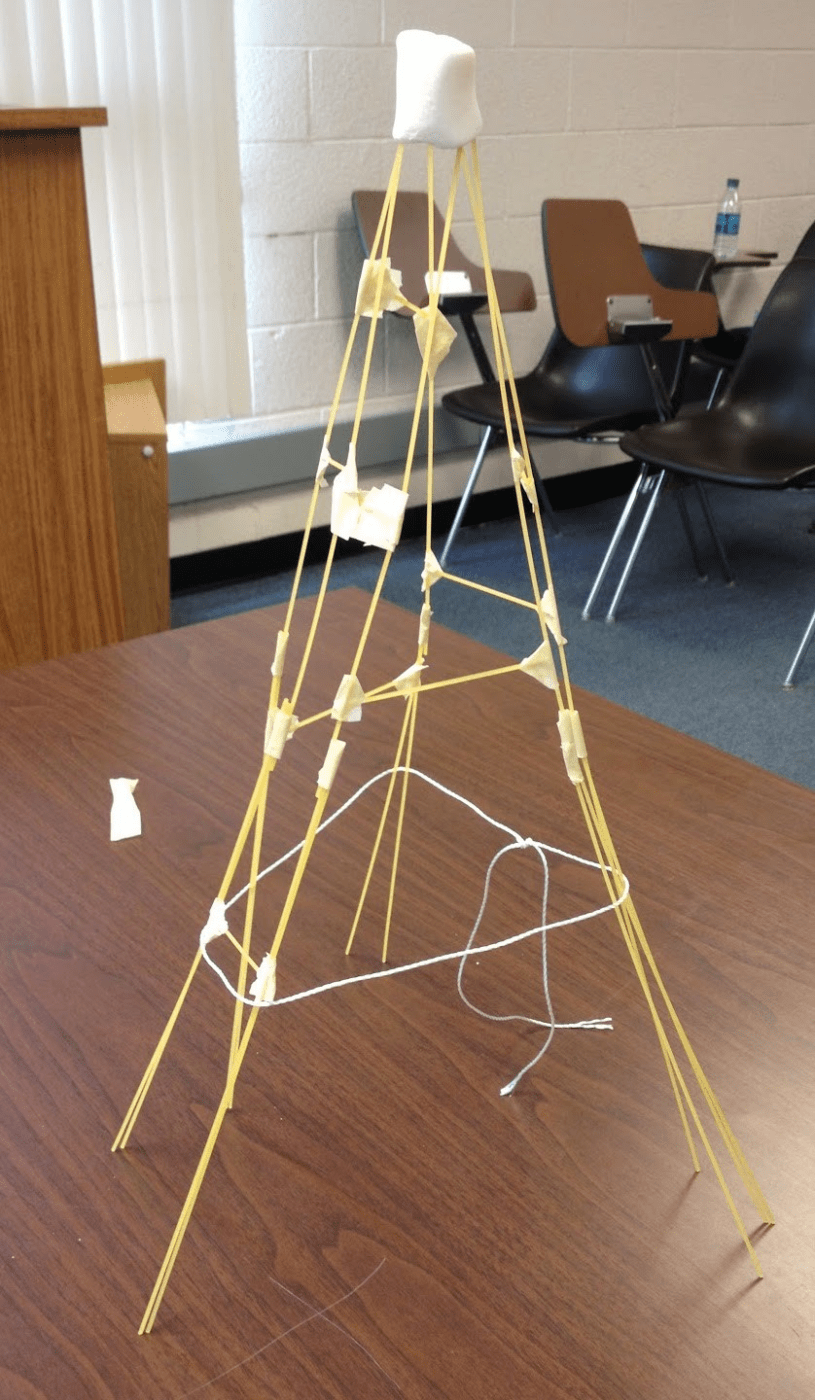
Props required: Spaghetti sticks, tape, string, marshmallows
Icebreaker quizzes
These are another fun way to get to know your colleagues and start interesting conversations. Plus, as they’re typically one-word answers, they are an excellent option for teams with introverts (or those who don’t prefer longer conversations).
10. Trivia quizzes
Here’s where you can test your team’s knowledge of important (or interesting) facts. They can cover various topics, making them suitable for various group settings.
Here are some examples:
- General knowledge: What is the population of the capital of Australia?
- History: Who was the twenty-first president of the United States?
- Science: What is the name of the biggest moon of the largest planet in our solar system?
- Geography: What is the height of the tallest mountain in the world?
You can leverage GenAI tools like ClickUp Brain to generate endless trivia questions.
Another idea is to create a trivia event around major events in your country (or city), like a Taylor Swift Trivia Night (or Afternoon) during the Eras tour, an Oscars-themed quiz during the weeks leading up to the award ceremony, or a Superbowl party with a football trivia challenge.
11. Personality quizzes
These are quizzes where you uncover your teammates’ personality traits, preferences, or interests. The good news: there are so many options online.
For example, if you’re a fan of ‘The Office’ (no pun intended), then here’s a quiz by BrainFall that’ll tell you which Dunder Mifflin employee you and your colleagues most relate to.

Energizing icebreakers
If you’re looking for fun a ice breaker exercise to simply wake (or warm) people up before the meeting, energizers are a great option. Contrary to popular belief, energizers aren’t limited to physical activities.
Mental challenges and games for small groups, like charades or storytelling chains, can be equally invigorating and engaging.
Here are some ideas:
12. Human rock, paper, scissors
It is a large-scale version of the regular rock, paper, scissors game—you use your entire body to create the shapes here. For example, you can:
- Crouch down to represent a rock
- Stretch arms wide to symbolize paper
- Touch your left arm to your right leg to mimic scissors
The rules remain the same: rock beats scissors, scissors beat paper, and paper beats rock.
13. Fizz buzz
This is the childhood number game that you might already know. You take turns counting up from one. However, instead of saying numbers divisible by 3, you say ‘fizz,’ and instead of numbers divisible by 5, you say ‘buzz.’ For numbers divisible by both 3 and 5, you say “fizz buzz.”
Here’s how it works: The first person says one, the next person says two, and the third says Fizz. The sequence continues—4, Buzz, Fizz, 7, 8, Fizz, Buzz, 11, Fizz, 13, 14, Fizz Buzz, 16, and so on.
If someone hesitates or makes a mistake, they lose. The last remaining player is the winner.
Icebreakers for remote teams
The rise of remote and hybrid work has shifted team interactions from conference halls to Zoom calls. This also means increased screen fatigue, making icebreakers all the more important in reducing the tediousness of long virtual meetings.
But you can’t approach virtual icebreakers like an IRL activity. For one thing, virtual icebreakers have to be shorter—anything over 20 minutes, and you might lose your team’s interest.
If you’re a global team, you’ll also have to accommodate participants from different time zones, cultures, and backgrounds.
The ClickUp Fun Meeting Agenda Template is just what you need to address these considerations and organize your ideas, along with details like the priority (or interest level) for each icebreaker, which group member is responsible for it, and when it’ll happen.
The template also comes with custom fields for appointing a:
- Facilitator: The moderator or host
- Attendees: The teammates who attend
- Notetaker: The person who gets attendee feedback and writes the retro
- Timekeeper: The person who ensures you don’t go over the time limit
There’s also a field for Apologies for the people who didn’t attend (and their reasons for the same)
In short, this template helps you create an agenda and set up a committee for each icebreaker (or team bonding) session—helping you approach the process mindfully.
Here are some not-awkward, not-forced virtual icebreaker ideas:
14. Meeting background charades
A simple, low-effort activity—give team members a theme and ask them to set an appropriate background. It’s pretty easy, as most video conferencing tools allow you to add custom backgrounds with just a click.
Once the team meeting begins, everyone can take turns guessing what each other’s backgrounds signify. Here are some theme ideas to get you started:
- Hypothetical worlds
- Art styles
- Music genres
- Fashion decades
15. Async whiteboarding
Raise your hand if you’ve got up at 2:00 a.m. to participate in your remote team’s virtual happy hour. ✋
While real-time team-building activities are great, timezone variations can make them more of a chore than a fun game to look forward to. So why not make your virtual team-building activities asynchronous?
And the best part—all you need is a whiteboard.
One idea is to use a free tool like the ClickUp Whiteboards tool to play ‘draw your mood’.
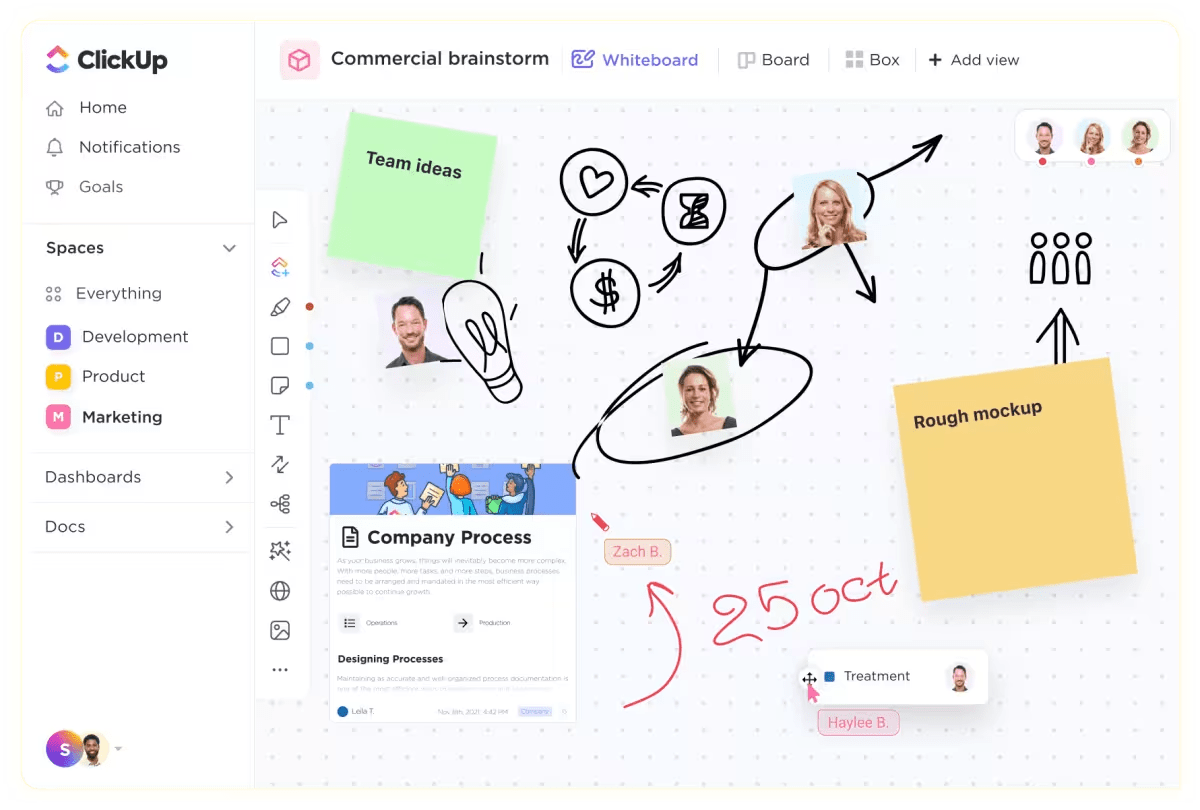
Here’s how this works:
- Set up a shared ClickUp Whiteboard—let’s name it ‘Mood Meter’
- Set a recurring task that asks each team member to draw their mood on the Whiteboard at a set time every week—say Wednesday afternoon, 3:00 p.m., their local time
- The following day, the moderator can share a screenshot of the collaborative whiteboard, sparking a discussion about the final drawing within a designated channel in your internal messaging tool
Whiteboards are also a great option for open-ended icebreaker questions. The ClickUp Icebreaker Whiteboard Template makes this super easy. Simply duplicate the template for each week, add your questions, and share it with your team.
Your team can then type (or draw) their answers and comment on other people’s answers.
We recommend designating a different host for each session. They can set the theme, add questions, and, most importantly, engage with your team’s answers and prompt discussions.
How to Choose the Perfect Icebreakers for Your Small Group
There are endless ways to break the ice at team meetings and gatherings, but not all icebreaker activities work best in all situations.
For example, a game like Human Bingo (where players find people matching descriptions on a 5×5 bingo card) or speed networking works great for large, in-person gatherings. But it’s not one of your virtual or small group icebreakers.
Here are some tips to help you choose the right icebreakers for your small group:
- Know your audience: Consider your team’s personalities, energy levels, and comfort zones. While introverts might prefer introspective, open-ended questions, people with disabilities might feel excluded from physical or high-stimulus activities
- Meeting goals: Match the icebreaker to your meeting’s purpose. Is it a team-building activity, or do you need a quick 10-minute energizer for training sessions?
- Balance fun and purpose: Aim for icebreakers that are fun but also encourage people to build meaningful connections. Going back to an earlier example of Jenga—simply adding a question to each block makes it fun and creates a dialogue
- Consider the meeting format: As we mentioned earlier, icebreakers have to be approached differently in virtual and IRL situations
- Get feedback: Finally, ask your team how they liked the activity and if they’d like to repeat it. That way, you can pick better options for future sessions
We recommend building a list of icebreaker activities for different scenarios in your project management software. That way, you don’t have to repeat the research process.
ClickUp Meetings is a powerful tool designed to simplify meeting organization and collaboration.
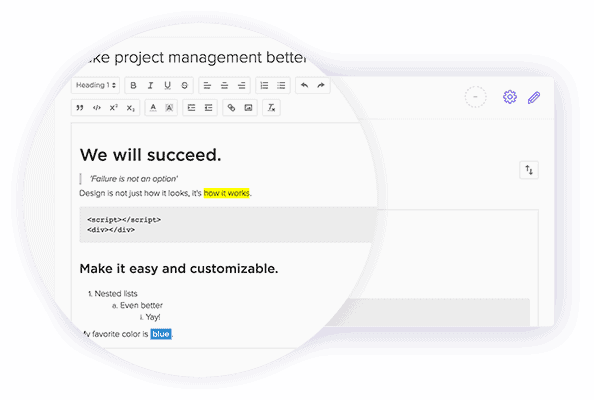
Some of the ways ClickUp Meetings can help you include:
- Real-time collaboration: Collaborate on meeting agendas, notes, and action items during the meeting
- Note-taking: Capture key points and decisions in a structured format
- Action item tracking: Convert meeting notes into actionable tasks
- File sharing: Share relevant documents and resources directly within the meeting
- Integrations: Connect with other tools like Zoom for seamless video conferencing from right within ClickUp
- Centralized calendar: Easily schedule, reschedule, and manage meetings in one place
- Recurring meetings: Set up regular meetings with automatic reminders
- Custom fields: Add specific details to meetings, such as attendees, goals, or outcomes
Also Read: 15 Free Project Communication Plan Templates
Plan (and Run) Your Icebreaker Activities with ClickUp
Icebreakers are great tools to build rapport, boost team morale, and set a positive tone for any gathering. The only caveat—you have to pick activities that match your team’s personalities and interests.
Creating an icebreaker toolkit with various options can help you adapt to different group dynamics and meeting objectives.
Here’s where you’ll benefit from a work management tool like ClickUp. Its built-in tools can help you centralize your icebreaker ideas, create a form to get team feedback, and even form a committee to brainstorm new activities.
The best part: You can even play some icebreaker games like trivia and indulge in fun whiteboarding activities from within ClickUp.
Sign up to ClickUp for free, and ensure you never run out of icebreaker ideas (or trivia questions).





